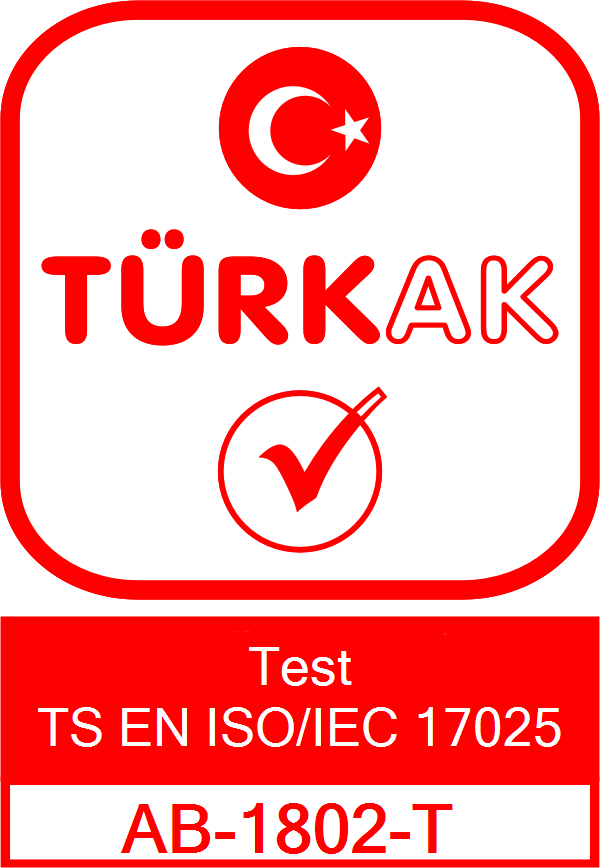Determination of Copper Corrosion
Copper Corrosion Testing in Lubricant Oils
Copper corrosion testing evaluates the potential of additives in lubricant oils to cause corrosion on metal surfaces. This test is critical for measuring the chemical effects of lubricants—such as motor oils, gear oils, and hydraulic fluids—on metal surfaces. By assessing the impact of lubricant oils on copper surfaces, the test provides insights into oil performance and equipment longevity.
What Is Copper Corrosion and Why Is It Important?
Copper corrosion occurs when chemical components in lubricant oils (such as acidic substances, oxidized compounds, or water) interact with copper surfaces, causing degradation or discoloration.
Importance of Copper Corrosion Testing
-
Equipment Longevity:
Parts containing copper or copper alloys, such as bearings and bushings, can be affected by corrosion. -
Determining Oil Quality:
Acidity or oxidation products in oils can degrade copper surfaces, reducing lubricant effectiveness. -
System Efficiency:
Corrosion can impair the friction performance and durability of equipment components.
Objectives of Copper Corrosion Testing
-
Assessing Chemical Stability:
Evaluates the impact of additives on copper surfaces. -
Ensuring Equipment Protection:
Verifies whether the oil contains corrosive substances. -
Quality Control:
Validates the quality of new or used oils.
Types of Lubricants Tested
- Motor Oils: Used in internal combustion engine lubrication systems.
- Hydraulic Oils: Used for pressure transmission in hydraulic systems.
- Gear Oils: Used in industrial gear systems.
- Transformer Oils: Used for insulation and cooling in electrical equipment.
Test Method: ASTM D130
ASTM D130 is the international standard used for conducting copper corrosion tests in lubricant oils. This method immerses a copper strip in the test oil for a specific duration and evaluates the corrosion effect.
Test Process
-
Sample Preparation:
- A specific amount (e.g., 30-50 ml) of the test oil is placed in a glass tube.
-
Copper Strip Preparation:
- A polished, ASTM D130-compliant copper strip is cleaned, polished, and free from contamination.
-
Test Execution:
- The copper strip is fully immersed in the oil sample.
- The sample is incubated for a specified period (usually 3 hours) at a set temperature (e.g., 100°C).
-
Evaluation:
- After the test, the copper strip is cleaned and assessed for discoloration.
- Corrosion is rated using the ASTM D130 color scale, ranging from 1a (no corrosion) to 4c (severe corrosion).
Copper Corrosion Ratings
| Grade | Description | Condition |
|---|---|---|
| 1a | Bright, no stain | No corrosion |
| 1b | Slight tarnish | Negligible corrosion |
| 2a | Dark tarnish | Slight corrosion |
| 2b | Dark orange stains | Moderate corrosion |
| 3a | Reddish-brown discoloration | Significant corrosion |
| 4a-4c | Black stains or degradation | Severe corrosion |
Standards for Copper Corrosion Testing
- ASTM D130: Standard for copper corrosion testing in lubricant oils.
- ISO 2160: International standard for copper corrosion detection in mineral oils.
- DIN 51585: German standard for corrosion testing in industrial oils.
Benefits of Copper Corrosion Testing
-
Ensures Oil Quality:
Detects corrosive chemicals in oils. -
Optimizes Equipment Performance:
Prevents the use of oils that may cause corrosion. -
Facilitates Maintenance:
Identifies wear and corrosion early to reduce maintenance costs. -
Meets International Standards:
Complies with ASTM and ISO standards for global quality requirements.
TTS Laboratory Services for Copper Corrosion Testing
TTS Laboratory Services provides comprehensive copper corrosion testing in lubricant oils:
- Accurate and Reliable Analysis: Tests conducted per ASTM D130 and ISO 2160 standards.
- Fast and Precise Results: State-of-the-art laboratory infrastructure ensures quick and dependable analyses.
- Detailed Reporting: Comprehensive evaluation and commentary based on test results.
- Product Development Support: Guidance for optimizing oil formulations.
- International Certification: Assistance with compliance to global quality standards.
Copper corrosion testing in lubricant oils is essential to evaluate the impact of oils on metal surfaces, protect equipment health, and improve lubricant quality. This analysis enhances oil performance and extends equipment lifespan.
TTS Laboratory Services provides professional, fast, and reliable solutions for copper corrosion testing in lubricant oils.
TTS Laboratory Services: With our accredited analysis scope, we are here to support your testing needs.

